UK: Kuldja Hawkmoth, RUS: Kul'dzhenskii Brazhnik
Pterogon kuldjaensis Graeser, 1892, Dt. ent. Z. 37: 299.Type locality: Kuldja [Yining/Gulja, Tian Shan, Xinjiang Province, China].
Holarctic; western Palaearctic region. Pleistocene refuge: Monocentric -- Turkestan refuge. Probably an arcto-tertiary relict which evolved from an isolated population of Sphingonaepiopsis gongoniades (Hübner, [1819]).
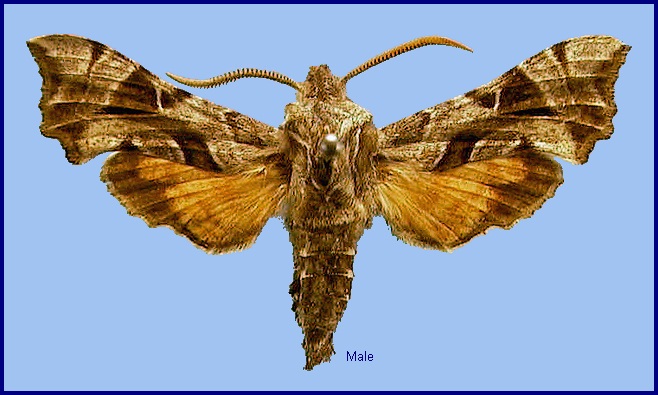
Wingspan: 30--34mm. Resembles Sphingonaepiopsis gorgoniades f. chloroptera Mentzer, 1974, but hindwing bright orange with a brown border. According to Zolotuhin (1994), adults of the second generation are lighter in colour than those of the first generation, with the grey colour of the forewings being replaced by reddish-brown.
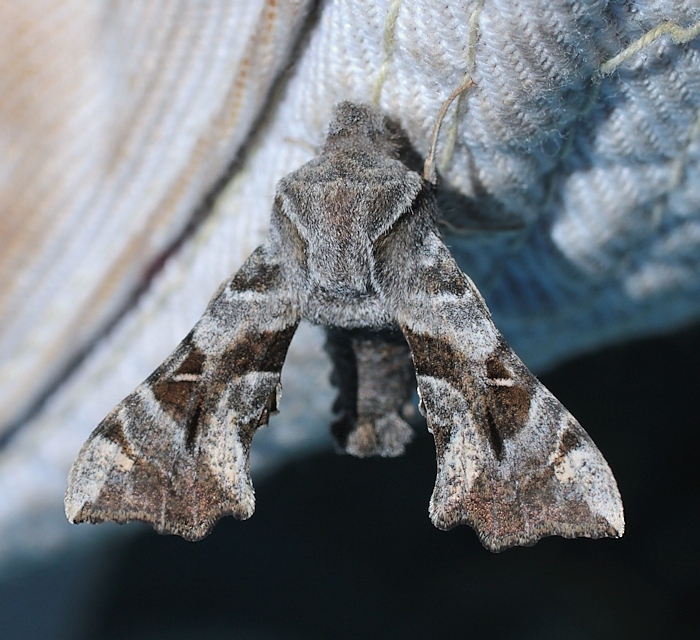
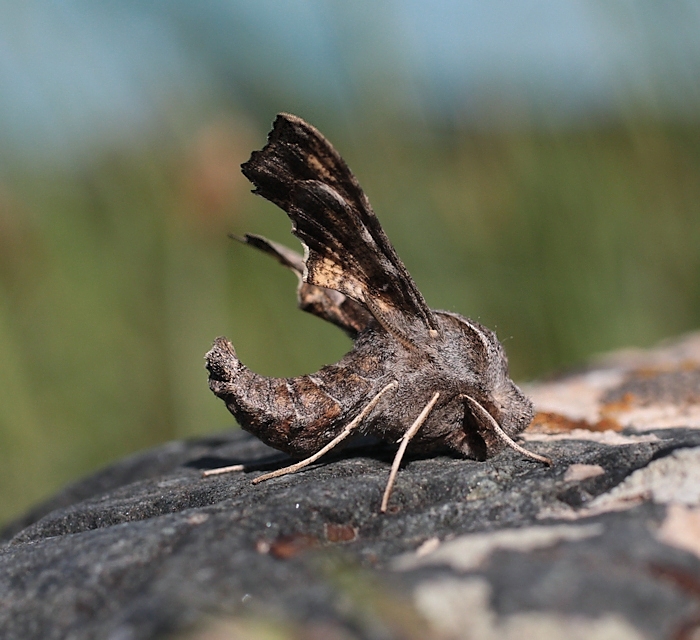
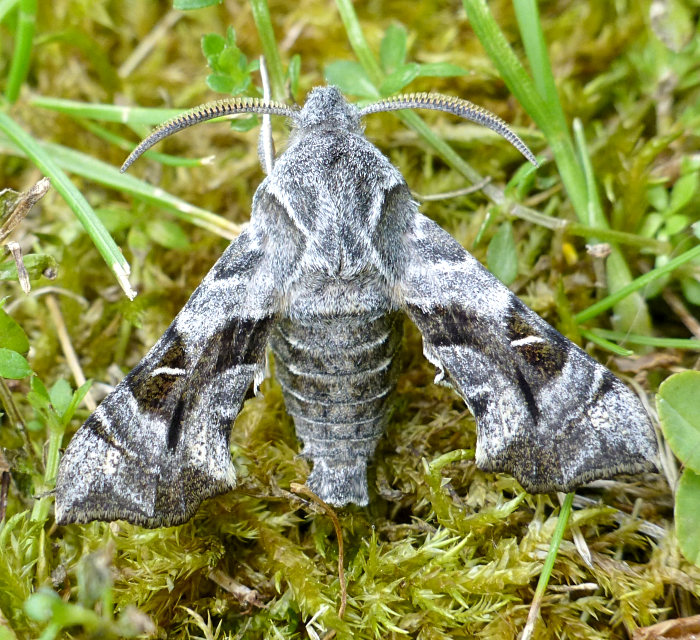
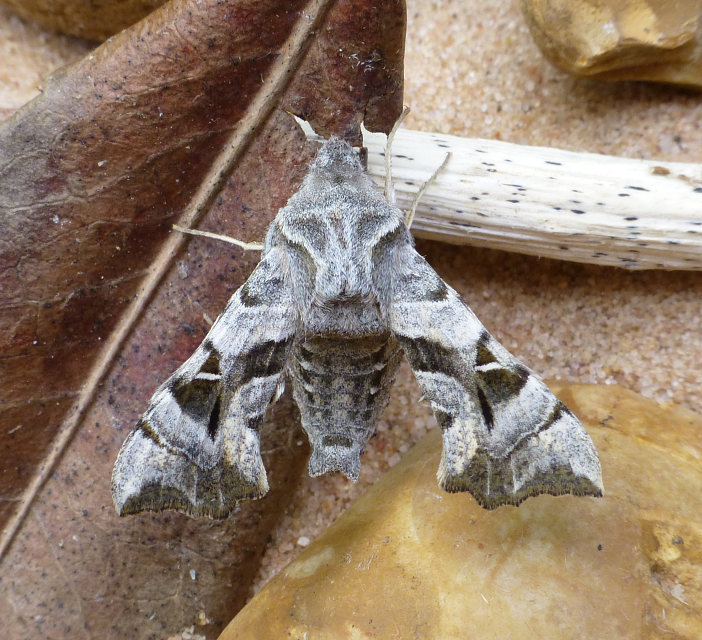
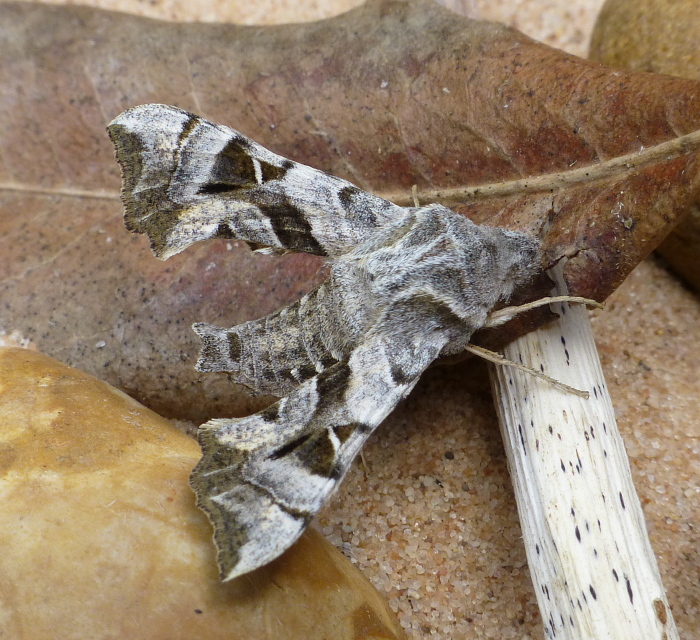
Males are active from sunset until 04.00-05.00 hours, females from sunset to midnight. A species of shrubby, herb-rich mountain steppe as low as 400m altitude in the Altai Mountains, and up to 1250m in Uzbekistan (Zolotuhin, 1994) and 1600m in Kyrgyzstan (Toropov, Milko, Zhdanko & Evdoshenko, 2023).
Bivoltine; late April to early July, and again as a partial second brood from early July until late August (Zolotuhin, 1994). Most adults are to be found in May; Shovkoon (2015) found it in the Karatau area, Kazakhstan, on 12.v.2014.
OVUM: Small (1.0 x 1.0mm). Light green with a strong pearl lustre at first, changing to greenish yellow. Laid in ones and twos on the tips of Galium shoots. Hatches in about 7 days (Zolotuhin, 1994).
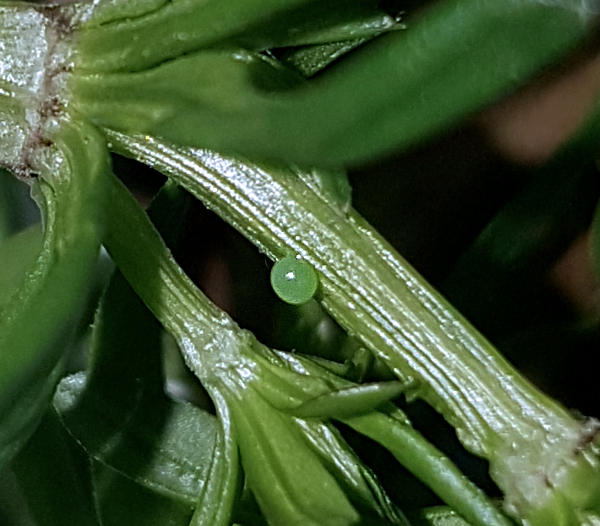
LARVA: Full-fed, 40mm. Polymorphic: bluish-green or yellowish-green.
According to Zolotuhin (1994), the newly hatched larva is 3.5 mm long and greyish yellow-green. After an hour this colour darkens to grey-green with a faint, pale dorso-lateral line. The body is covered with black, hair-bearing setae. The horn is dark and 0.8 mm in length. In the second instar the larva is very Hemaris-like, with a grey-green body, green head and straight black horn. Superimposed on this is a bold, white, ventro-lateral band running from head to anal claspers, and a fainter dorso-lateral line of the same colour running from horn to head. The previously pronounced black setae give way to pale tubercles distributed in regular rows all over the body. In the final instar the body is bluish-green, the tubercles white and the horn violet-blue. The ventro-lateral band can be white or white with a red border or rosy-red. In one example reared by Zolotuhin, the basic body colour was yellowish-green, the ventro-lateral band was rosy-red, and there were a series of large 'X' marks of the same colour running down the back between the dorso-lateral lines. All larvae change to violet-reddish prior to pupation.
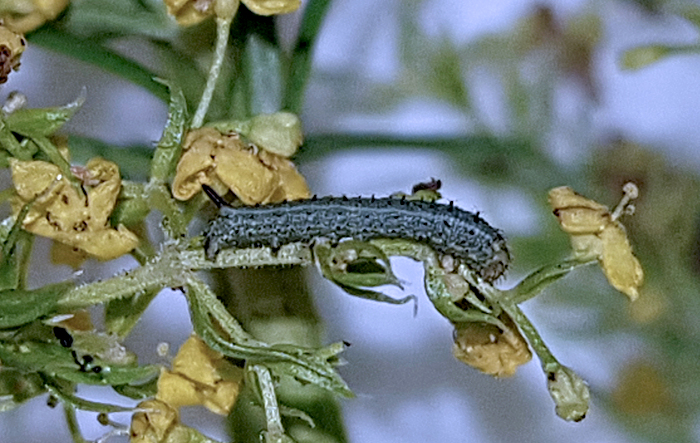
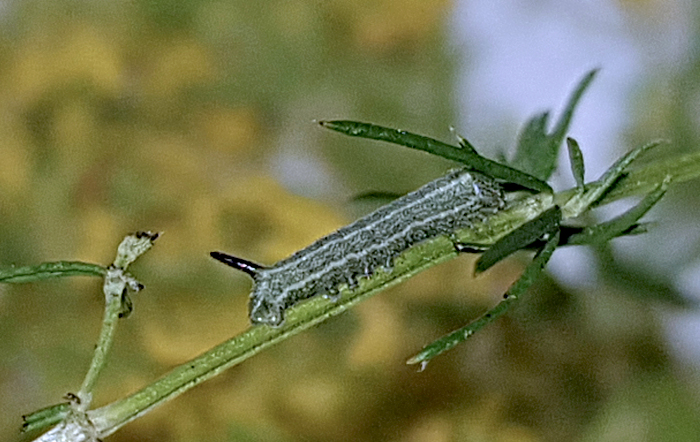
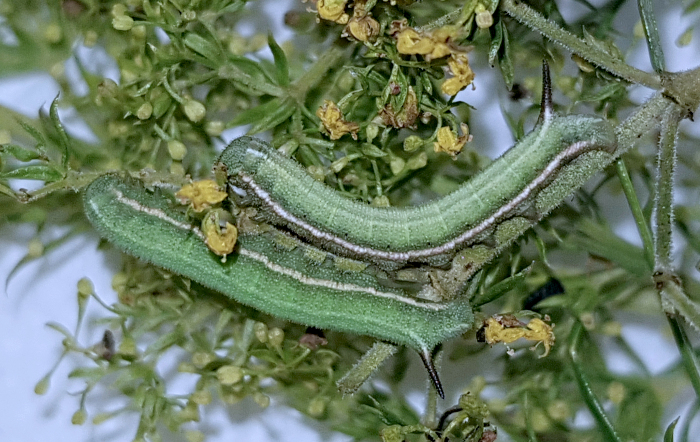
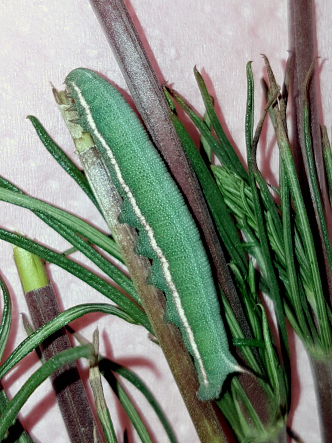
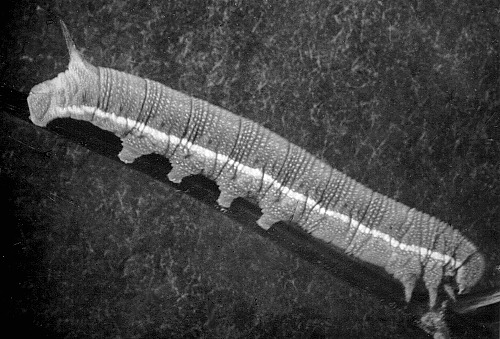
The young larvae are not very mobile and eat only at long intervals, when they dine on flower buds and young leaves.
Occurs from May to September in Uzbekistan.
Hostplants. Galium (Zolotuhin, 1994), and Rubia alaica Pachom. in Kyrgyzstan (Toropov, Milko, Zhdanko & Evdoshenko, 2023).
PUPA: 18--23 mm. Shiny black with orange-brown intersegmental cuticle on the abdomen. The surface of the head and thorax are slightly wrinkled and the abdomen is heavily punctate. The proboscis projects weakly frontad. Cremaster elongate, triangular, dorso-ventrally flattened with a bifurcated tip (Zolotuhin, 1994). Formed in a loosely-spun cocoon of silk among debris on the ground. The overwintering stage.
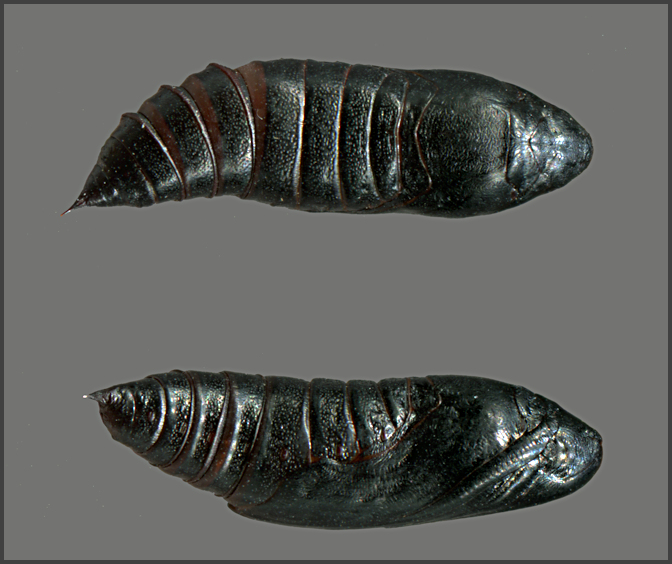
Unknown.
Known, at present, only from eastern and southern hills of Kazakhstan (43°47'N 68°46'E (Shovkoon, 2015; Korb, 2018; Toropov, Milko, Zhdanko & Evdoshenko, 2023)), western Xinjiang Province (China), eastern Uzbekistan (Zolotuhin, 1994), Tajikistan and Kyrgyzstan (Derzhavets, 1984; Danner, Eitschberger & Surholt, 1998; Korb, 2018; Toropov, Milko, Zhdanko & Evdoshenko, 2023) and eastern Afghanistan (Danner, Eitschberger & Surholt, 1998).
Note: The individual of Sphingonaepiopsis kuldjaensis recorded from western Mongolia (Yakovlev, 2011; Yakovlev, Gus'kova, Doroshkin & Titov, 2015) appears to be Sphingonaepiopsis gurkoi Melichar & Řezáč, 2013.
Extra-limital range. None.
 Return to species list
Return to species list